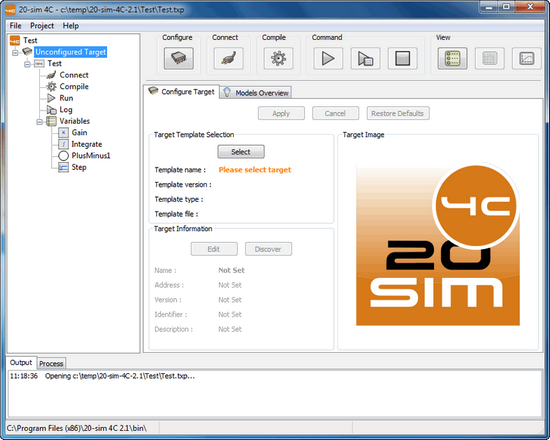20-sim 4C is a prototyping environment that enables you run C-code on on hardware like PC's or ARM-9 based processor boards. The C-code may be hand-written or automatically generated. This enables you to perform various tasks:
•Measurement and Calibration: From 20-sim 4C you can export C-code that will operate and read sensors.
•Machine Control: With 20-sim 4C you can export code to external targets to control the operation of machines. In 20-sim 4C you can start and stop the controller and change parameters during run-time.
•Rapid Prototyping: By generating C-code automatically from external programs like 20-sim, a rapid cycle of designing (20-sim), generating code (20-sim) and testing (20-sim 4C) can be performed.

20-sim 4C helps you to get 20-sim models running as C-code on real-time processors.
•Sources: 20-sim 4C will accept handwritten C-code and automatically generated C-code from external programs like 20-sim.
•Targets: With 20-sim 4C you can run code on any target that runs a RTAI Linux operating system like PC's, PC/104 boards and ARM processors.
•20-sim: Any 20-sim model can be exported to C-code and imported in 20-sim 4C.
•Command: From 20-sim 4C you can start and stop running code on a target processor. During run-time you can change parameter values.
•Monitoring and Logging: In 20-sim 4C you can monitor and log every variable that is available on the target. Values are transmitted from the target to 20-sim 4C in real-time with sample rates up-to 100 Hz or off-line with the full sample rates up to 50 kHz.
•Communication: 20-sim 4C runs on a Windows PC. Communication between 20-sim 4C and a target is performed through ethernet using the TCP/IP protocol.
•Speed: Sample rates up to 50 kHz can be achieved, depending on the type of processor and the used I/O hardware.